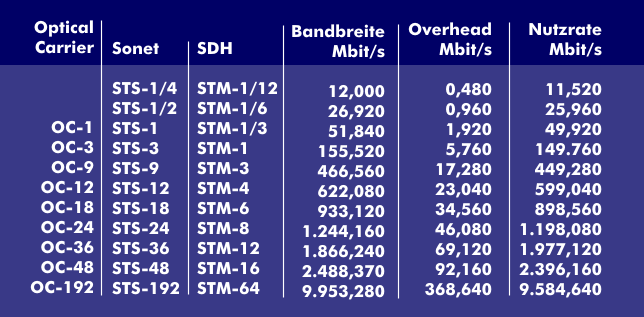synchronous optical network (SONET)
Synchronous Optical Network (SONET) is a high-speed network with transmission speeds from 12.0 Mbit/s up to 2.5 Gbit/s.
Sonet was developed by the American Bell Laboratories and is based on single-stage multiplexing. It is a synchronous transmission method for wide- area networks that gave rise to the ITU Synchronous Digital Hierarchy( SDH) standard in 1988. Sonet describes the transmission framework of OSI layer 1 and is used as a transport medium for ATM. In Sonet, the transmission rates, coding schemes and bit rate hierarchies are standardized.
The Sonet and SDH specifications are identical except for minor differences in the header of a frame. Both technologies use the same transmission rates. In Sonet, the frame is called Synchronous Transport Signal( STS), which is equivalent to Optical Carrier( OC) in its speeds.
The base bit rate of the North American Sonet hierarchy is STS-1 or OC-1 at 51.840 Mbps. Below that, there are STS-1/2 and STS-1/4, but no OC tier. Above that, there are STS and OC 3, 9, 12, 18, 24, 36 and 48 multiplex stages.


